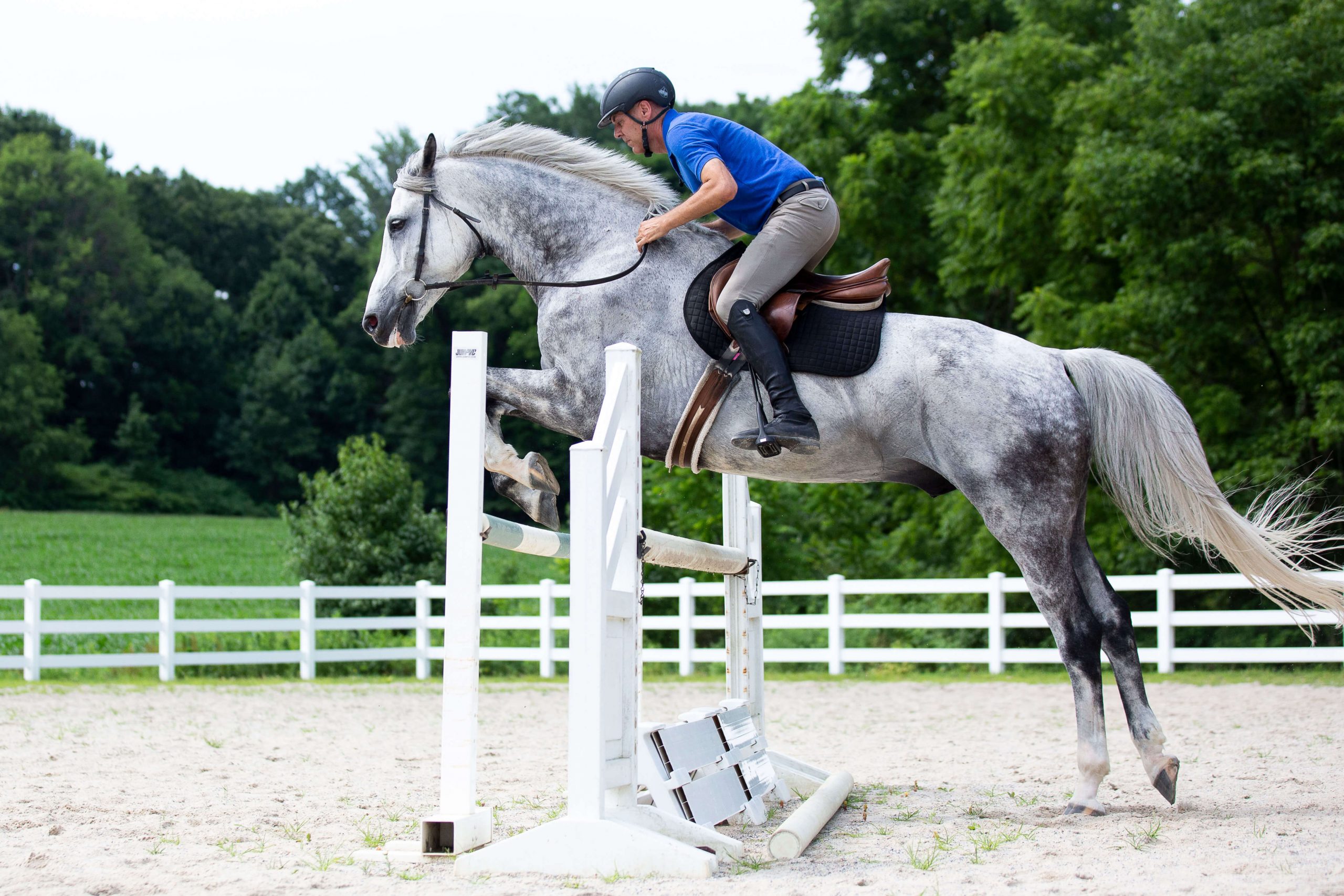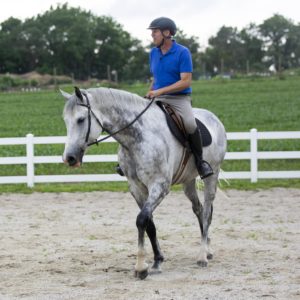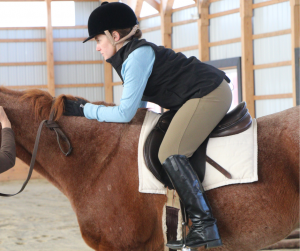What causes the big 3 jumping problems? Refusals, run-outs, and rushing?
Watch any lower level jumping class and you are bound to see more than a few anxious or misbehaving horses. What causes this behavior?
Science and learning psychology meet jump training in this interview with equine behavior expert Dr. Angelo Telatin as he explains how jumping problems are often caused and then inadvertently made worse by riders.
Angelo’s unique combination of experience as a competitive rider and academic study of behavior has helped him successfully re-train many “burnt out” jumpers.
Watch the interview below and then if you are interested in learning more with Angelo, Click Here for more information on the New Online Course, Building the Showjumper.














12 Responses
Hi Callie….. interesting interview and what Angelo says is precisely why I have not attempted to jump my horse for just over a year…… because I know that currently I’m not a good enough for her and I don’t want to spoil her/teach her bad habits. She has natural jumping ability, it’s in her genes and she jumps absolutely fine on the lunge and can make her own decisions about when to take off etc. Unfortunately because I’ve lost confident (in my older age) because she will put in some unnecessary huge jumps when ridden (at random) I was constantly mirco-managing her, holding her tight etc. and my position got worse and worse (standing in stirrups instead of folding and with weight over her shoulders). I’ve got an amazing jumping horse but it’s me that needs training ….. I am working on this and now think that I should take some lessons (local to me) where I ride a school master so I can improve myself before try to jump my horse and in meantime I’ll have someone far more confident and experienced jump my girl in the hopes that someday she and I can join partnership again and trust each other more. XX
Hi Dawne, I’m really sorry to hear that you lost your confidence. I think that the exercises we have in the jumping courses would benefit both you and your horse when it comes to jumping and you could get your jumping ‘mojo’ back!
-Julia Burdy, CRK Training Community Manager
Thank you Julia for your reply, I would so love to get my jumping mojo back again and would love to join the jumping course if I can afford it.
Thank you for this video. I have been forgetting to use pressure/release technique. I plan to integrate it into my lessons from now on.
Glad you enjoyed the video Michele, happy it could serve as a reminder for you
-Julia Burdy, CRK Training Community Manager
Sigh-it is always our problem isn’t it? Great interview! Thanks for sharing!
My first “jumper prospect” was a gangling, downhill 2 y.o. crossbreed of arab, tb and draft-barely halter “broke”. Growing up in a pen-he had no kinesthetic experiences of where to place his feet…but I adored him-so as a four year old (I hadn’t jumped him yet)-we moved to N.M. and he and I would wander up and down the mesa’s and canyons every evening after school (bareback), and cover probably sixty to eighty miles every weekend. He never was built well-but became a stellar-totally honest jumper…He loved it-and had awesome form and athleticism. I really didn’t have to teach him-he had physically matured, learned where his feet were-how to handle himself in rough terrain-and I trusted him implicitly. If they like to do it-and have good control of their body-they figure it out like a border collie on sheep! A good course becomes a delightful puzzle for their brain and brawn and you are there to help them rate, stay on course and stay out of their way.
I think we often start them all too early-and before they have that balance and trust in their rider. I’ve seen the oddest looking horses jump like gazelles, with the joy and form of a champion-some of the better-never having set foot over a “jump” till well into their teens. If we look at it as just one more fun thing to do with a horse that is capable (I would never jump the one I have now), we would all get a lot more out of the experience ourselves. There are so many ways to hurt them in jumping-we owe it to them to hold up our end of the deal with a good seat and hands, balance and enough time with them for implicit and constant tuned in communication.
Thank you for sharing Claire! You’ve also brought up a very important point in your comment, the importance of cross training to develop the skills that help them be better jumpers
-Julia Burdy, CRK Training Community Manager
Does Angelo believe any breed of horse can become a successful jumper not necessarily for showing but for recreation and exercise. I believe it would be fun to train my mustangs to jump however they are not built like most jumpers and I want to make certain I am not training them for an activity that might cause premature damage to tendons and ligaments. Would like to know your thoughts .
Sharon, there are a lot of factors that contribute to a horse’s ability to jump! All horses can jump, but not all of them are going to have the talent or affinity for jumping huge heights. Some horses that are bred to jump end up in the dressage arena and others with zero jumping bloodlines love popping over the fences!
The concern about damage to the horse’s physical health also really depends on the individual horse and how they are taken care of, there are only of course so many jumps in each horse so it is something we have to be aware of and not over jump them!
I can’t think of any reason why you can’t do a little jumping with your mustangs!
-Julia Burdy, CRK Training Community Manager
Hi Callie, I love watching these videos. I don’t really understand all the “jumping language” that you and Angelo talk about for I am a newbie rider (only 1 year) and so far my most “advanced jump” is cantering over boxes and poles with our barn’s schoolhorse. However, I did have a great a ha moment when Angelo talks about how a horse learns from a photographic memory and not from time. Very interesting to learn about equine behaviour and how they learn.
Love this. I am new to riding o lu 6 months but recently my loan horse is refusing cross poles…cant wait to go back tomorrow and try trot poles in front to see if makes a difference
Let us know how it goes, Lorraine!
-Julia Burdy, CRK Training Community Manager